- Make It Yourself Lavender Heart-Shaped Bath Bombs!
- 20 Things You Never Knew About “Down There”
- 12 Best Foods For Those Suffering From Arthritis Pain
- 12 Personal Hygiene Mistakes Almost Everyone Makes (Mom Never Told You About #4!)
- 15 Medicinal Plants And Herbs From The Cherokee People
- 12 Mind-Blowing Benefits Of Drinking Coconut Water During Pregnancy
- 12 Outstanding Winter Foods That Won’t Fatten You Up Like A Christmas Turkey
12 Common Cancer-Causing Items To Remove From Your Home NOW (#8 is Scary!)

Photo credit: bigstock.com
As a caring parent and or spouse, you want to ensure that you and your family are as healthy and happy as possible. Who doesn’t want to provide the highest-quality and safest things for their household? It probably never crosses your mind that some of the products you bring into your home on a regular basis contain cancer-causing substances.
There are a huge number of known carcinogens in our homes of which many people are completely unaware. We assume that if it’s for sale in the store, it must have been tested and proven to be safe, right? This can be a dangerous assumption, and it’s one that no one should make in today’s world.
As we said, the list of carcinogens is a long and ponderous one, and we could not possibly list them all here. However, we have made a list of 12 of the most common carcinogens found in the average American household.
Keep reading and see if your home has any of these cancer-causing items so that you can remove them and make your home safe again.
1. Beef Hot Dogs
You might think that you are being healthier and safer by eating all beef hot dogs instead of those that contain pork or chicken, but beef hot dogs are loaded with carcinogens, including benzene hexachloride, dacthal, dieldrin, DDT, heptachlor, and hexachlorobenzene. Beef hot dogs also tend to have other dangerous chemicals including lindane, which is a neurotoxin that also causes damage to blood cells.. We haven’t even talked about the hormones, which interrupt our body’s natural hormone production, and antibiotics, which cause allergies and resistance.
Last, but certainly not least, although your children probably love hot dogs, you should be aware that all hot dogs contain nitrites, which interact with meat amines and form nitrosamines. These are carcinogenic and are a major risk factor in childhood cancers.
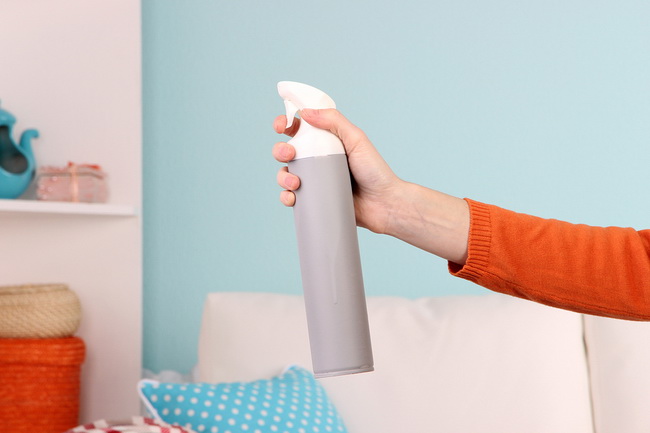
Photo credit: bigstock.com
2. Air Fresheners
The Natural Resources Defense Council published a report stating that almost all of the common air-fresheners people have in their homes contain chemicals with serious carcinogenic potential. This study says this even includes air fresheners that are labeled as being “all-natural.” Even products that are labeled as “unscented” contain a “scent” that has carcinogenic chemicals called phthalates.
There are many types of phthalates that have different health consequences, but almost all of them have one thing in common — they affect reproductive health. Many of these air fresheners don’t clean the air as we believe they will, but they do exacerbate respiratory problems such as asthma.
Make your own homemade air fresheners to avoid phthalates. Mix eight ounces of water and 10 to 20 drops (depending on how strong you want your mixture) of your favorite essential oil in a spray bottle, and use it all over your home to naturally make it smell great with no worries about dangerous or carcinogenic compounds.
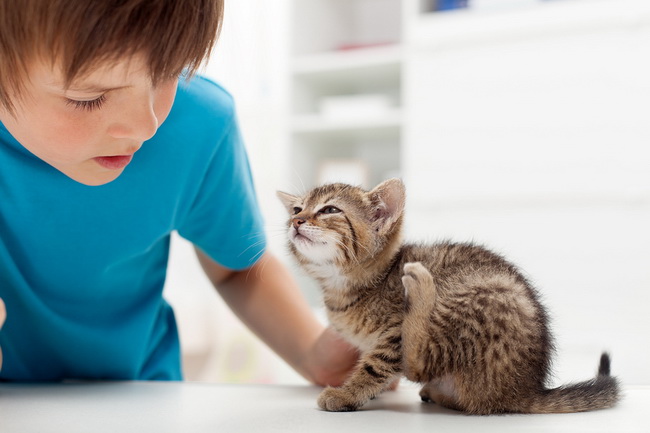
Photo credit: bigstock.com
3. Dog and Cat Flea Collars
No one likes fleas but the truth is flea collars only work around the neck area and are not effective repelling or killing fleas anywhere else on the body. In addition, many flea collars contain a known neurotoxin and carcinogenic compound called propoxur, which can harm your pet, your children, and yourself.
Get rid of fleas naturally by bathing your pet with a shampoo designed for them. You can also make your own flea-killing spray by mixing one quart of water with one cup of vinegar (either white or apple cider will work), then add 10 drops of lavender essential oil. Spray areas where your pet sleeps, plays, and any place else where your pet likes to hang out. You can also spray your pet with this mixture — just be sure to avoid the eye area.

Photo credit: bigstock.com
4. Scented Candles
Most scented candles use lead wicks, which you probably already know are dangerous. Lead is one of the most disastrous things for your health, but when you see candles that say they contain essential oils or that they have “natural aromatherapy” compounds, you probably think they are safe.
They could be, and even though the U.S. Consumer Council has banned the sale of lead wick candles, you should still check that your candle does not contain a lead wick or any other type of dangerous “perfumes.” To check if your candle wick contains lead, hold the wick and try to use it to draw a line on the paper. If you cannot see a smudge or line, your candle probably does not have a lead wick. Be certain that you know what is in your candle before you burn it, no matter how pretty it smells.

Photo credit: bigstock.com
5. Kitchen and Bathroom Cleaners
You know those cleaners that are meant to scrub your sinks, tubs, and toilets? The ones that look like pretty sand and generally come in cardboard shakers? We don’t want to name names, but these are loaded with toxic ingredients such as crystalline silica, which is a known carcinogen as well as an eye, lung, and skin irritant. Silica is a known carcinogen as listed in the 1994 Material Safety and Data Sheet. Some of these cleansers also contain “parfums,” which, like air fresheners, contain carcinogenic phthalates.
Make your own natural cleanser by mixing some vinegar and baking soda, or lemon juice and baking soda, for a disinfecting, natural cleanser that won’t scratch surfaces!
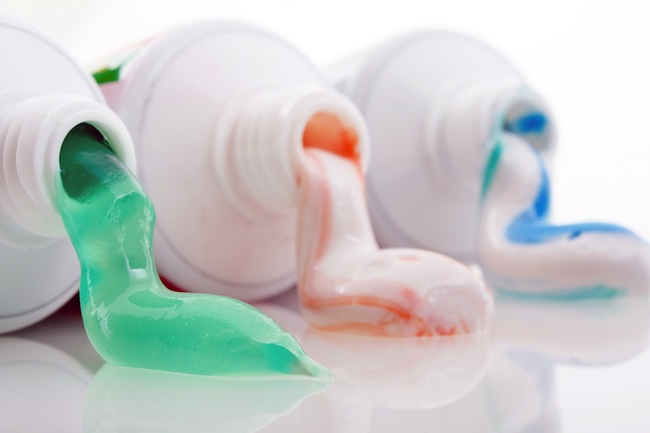
Photo credit: bigstock.com
6. Tartar Control Toothpaste
Some of the most trusted name brands of toothpaste that you would assume are safe contain some terrible ingredients that you don’t want near your family. Read the labels carefully. Many products, especially tartar control toothpastes, contain saccharin, which is a known carcinogenic; dyes FD&C Blue #1 (and sometimes other artificial colors), which are linked to behavior problems and certain types of cancer; as well as large amounts of fluoride, which has been linked to heart disease, lower IQ levels in children, and is believed to calcify the penal gland.
Make your own natural toothpaste by mixing coconut oil, baking soda, and a few drops of peppermint essential oil.
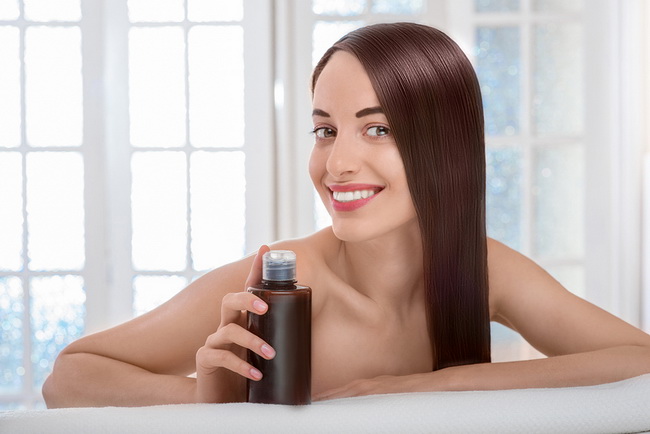
Photo credit: bigstock.com
7. Hair Color
Many women (and a few men) wouldn’t dream of eating anything that isn’t natural and organic, but they have no problem putting cancer-causing chemicals on their heads once a month. Although ingredients vary, most home hair coloring kits contain the following:
- Quaternium-15 – This is a known neurotoxin, skin irritant, and formaldehyde releaser.
- Diethanolamine (DEA) – This is a very well-known carcinogen that also interacts with nitrites to form a carcinogenic nitrosamine.
- Fragrances – Although manufacturers don’t have to disclose their actual ingredients, most fragrances can cause contact dermatitis and have carcinogenic potential, depending on the actual chemicals used.
- Phenylene-Diamines – Another known carcinogen that can also cause contact dermatitis.
- Propylene glycol – Otherwise known as antifreeze, this is another carcinogen.
There has also been an association between hair color and multiple myeloma, non-Hodgkin’s lymphoma, and other types of cancer.
Perhaps it’s time we decided to stop being partially “natural” and go all the way. Embrace the gray, and let’s age gracefully.
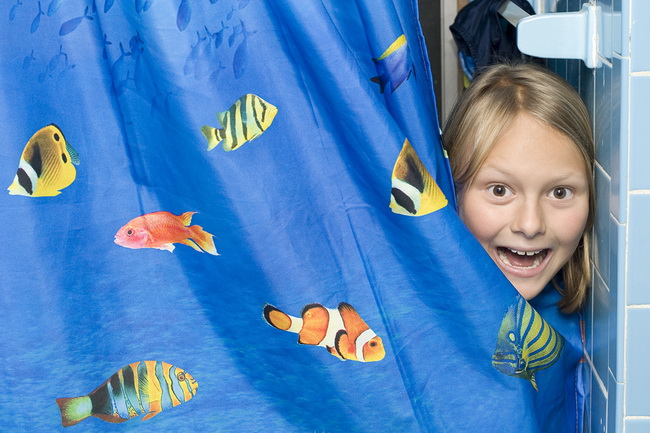
Photo credit: bigstock.com
8. Shower Curtains and Other Plastics
The scary thing about this one is the amount of plastic that now infiltrates our everyday life. The most dangerous type of plastic is polyvinyl chloride, which you most likely know by its abbreviation, PVC. The third-most produced type of plastic in the world, PVC can be very helpful in certain situations, such as sewer pipes, but when used in everyday environments, it releases toxic compounds that are well-known carcinogens.
Shower curtains are one of the most common ways people get PVC into their homes. This toxin has been shown to affect the respiratory system and reproductive system, as well as being carcinogenic. Many dangerous plastics are used to make food storage containers, water and juice bottles, children’s toys, furniture, and almost anything else imaginable.
We can’t avoid plastic in our daily lives unless we decide to find a cave and live like our ancestors. You can limit the amount of plastic you allow into your life, however. Choose natural fiber or EVA shower curtains. Give your children non-plastic toys or be sure that they do not contain PVC, and use alternatives to plastic food storage containers such as glass or stainless steel.
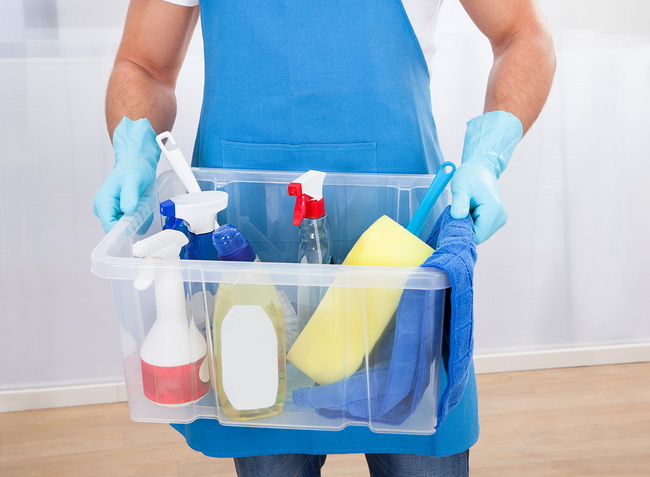
Photo credit: bigstock.com
9. Dry Cleaning Products
The American Cancer Society says that other well-known carcinogens that are commonly used are the chemicals tetrachloroethylene or perchloroethylene, which are used on clothes and household items (such as drapes or rugs) that are dry cleaned.
If you send clothes to the dry cleaners, ask them if they use either of these two chemicals. If they do, choose another dry cleaning service.
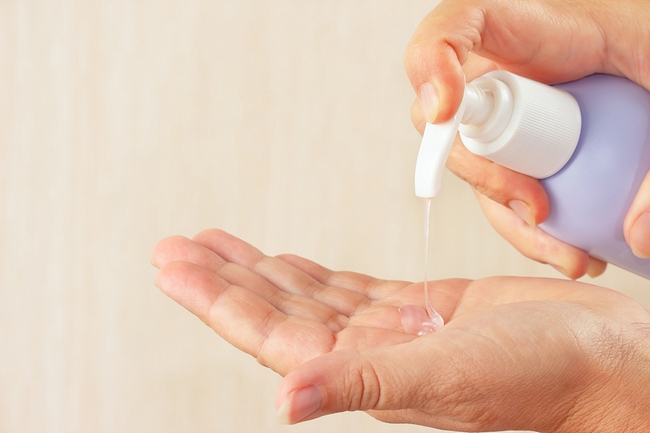
Photo credit: bigstock.com
10. Antibacterial Products
What do you think of when you see the words “antibacterial” on a soap or detergent? It makes you feel clean and safe, doesn’t it? Well, you might be clean, but safe? There is an ingredient used in many antibacterial products called triclosan, which has been banned by the European Union because studies have shown that this product is most likely a carcinogen, and there is no doubt that it is a hormone disruptor. Even the FDA has suggested that companies stop using triclosan in their products since the safety of this ingredient is in question.
SEE ALSO: Make Your Own Herbal Liquid Hand Soap Quickly and Easily!
You know if the FDA is suggesting that triclosan be banned, it must be bad since the government agencies generally do not take action until people have been injured, get sick, or die.
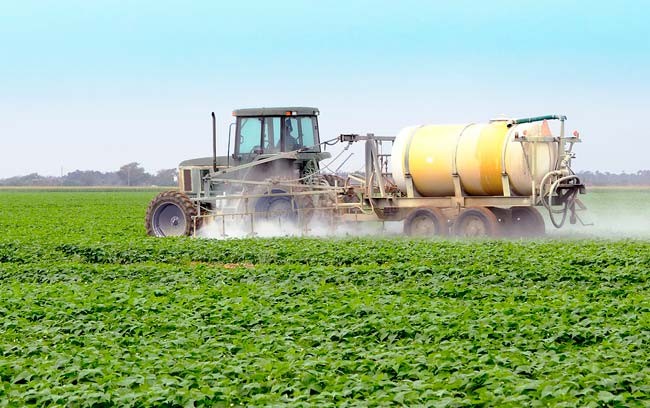
Photo credit: bigstock.com
11. Insecticides and Pesticides
You might think that those insecticides and pesticides that claim to be “environmentally” or “pet” friendly would be safe but, like many other cleaning materials, these are also anything but safe.
Most flea and tick products contain permethrin, carbamates, and organophosphate, which, while they don’t seem to affect our pets, they are certainly carcinogenic to humans! The same goes for many pesticides, which might not show immediate symptoms but over time can lead to serious health problems, including cancer.
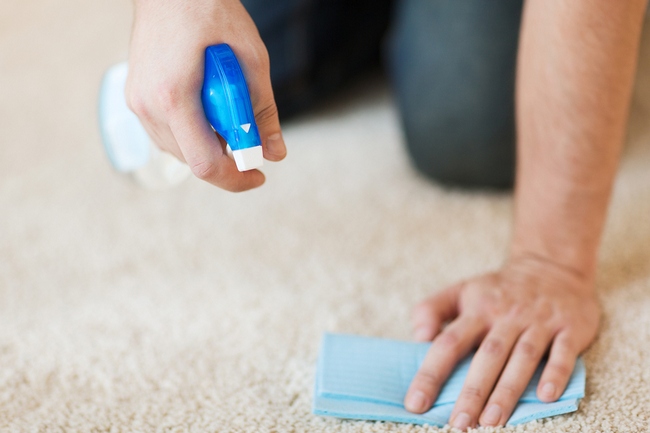
Photo credit: bigstock.com
12. Carpet Cleaners or Fabric Shampoo
No one likes a dirty carpet or sofa, but many of these fabric cleaners that offer “super stain removal” use an ingredient called perchloroethylene, or tetrachloroethylene, which has been linked to an increased risk of lung cancer. Sometimes carpet cleaners use a compound called naphthalene, which is the main ingredient in mothballs and has been shown in many studies over the years to increase the risk of developing lung cancer or throat cancer.
Cleaning your carpet and sofa is as simple as walking into your kitchen. Baking soda is great at removing odors and plain white vinegar can remove dirt and stains. Sprinkle your carpet with baking soda and allow it to sit for 20 minutes, and then vacuum. If you want to remove stains, add some white vinegar and water and scrub the affected areas. Allow to dry, then vacuum.
Alternately, you can steam clean carpets, drapes, and sofas using nothing more than white vinegar and water. Steaming is a great way to clean fabrics and carpets that will kill germs and remove stains without using any dangerous chemicals.
Detoxifying your home is an integral part of the detox concept. If you regularly follow detox programs to keep your body clean and natural, then do the same for your home. Remove these products to keep your home, and your family, as safe and healthy as possible.
References:
































